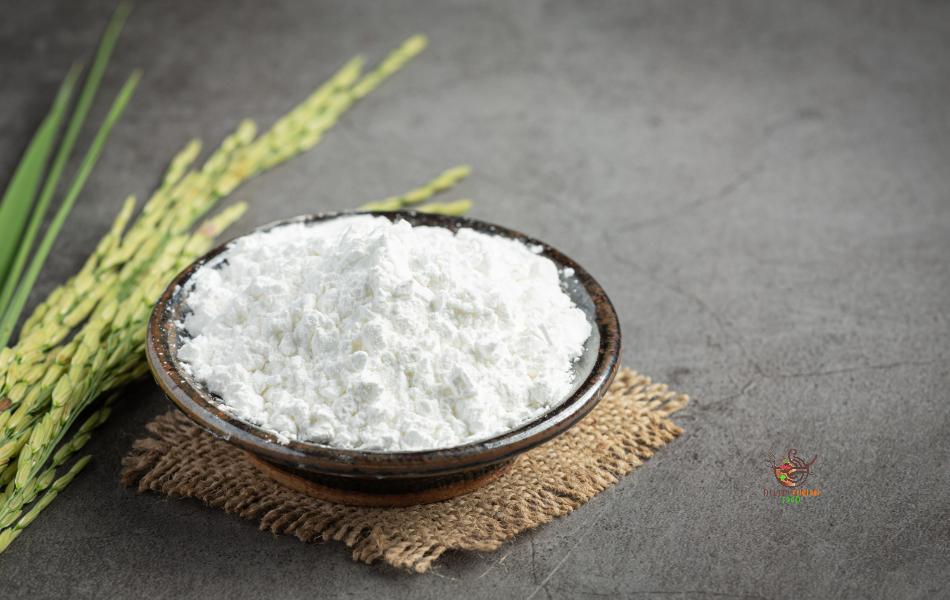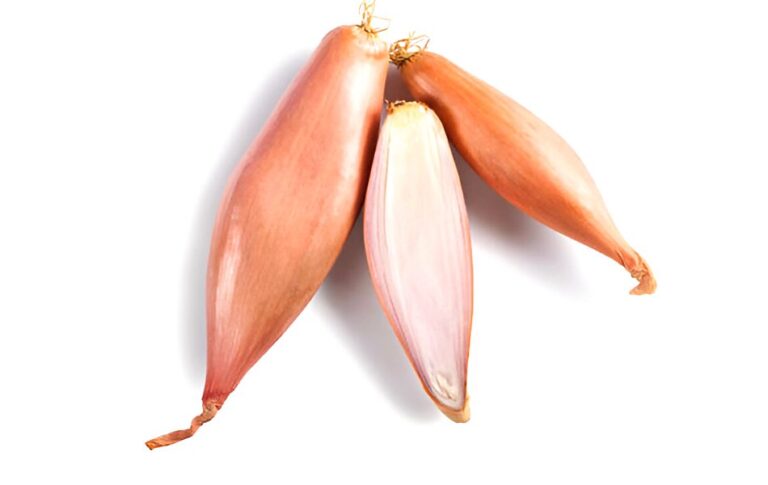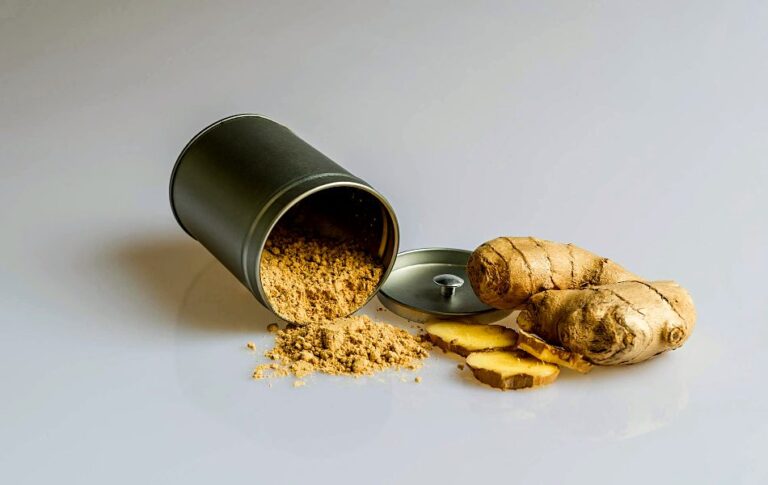15 Most Reasonable Substitutes for Rice Flour
Encountered a baking predicament due to the absence of rice flour? You’re in luck! Drawing from extensive experimentation with various ingredients, I’ve curated a selection of prime substitutes for rice flour. Spanning from almond flour to oat flour, I’ll unveil the virtues of these alternatives for baking, accompanied by practical tips to facilitate your baking journey. Let’s embark on this exploration of rice flour substitutes together!
What is Rice Flour?
Rice flour is just ground-up rice. It can be made from white or brown rice. You can find it in coarse or fine forms. The coarse kind adds a nice crunch to cookies or crackers, while the finer type is perfect for cakes or sauces because it mixes smoothly without clumping.
Varieties of Rice Flour
White Rice Flour: This flour is made from finely ground white rice and is the most common and flexible choice. It boasts a subtle flavor and a silky texture, making it a versatile option for many recipes.
Brown Rice Flour: Made from brown rice, this flour retains the bran and germ, offering a slightly nuttier taste and coarser texture compared to white rice flour. Many people favor brown rice flour due to its superior nutritional content.
Sweet Rice Flour: Sweet rice flour, also referred to as glutinous rice flour, is derived from sticky rice. Contrary to its name, it is gluten-free. Once cooked, it transforms into a sticky and elastic texture, ideal for creating dishes like mochi and dumplings.
Rice Starch: Finely milled, rice starch serves primarily as a thickening agent. With a high starch content, it’s commonly used in sauces, gravies, and desserts to achieve a smooth, glossy texture.
These diverse types of rice flour offer various options for your culinary endeavors, allowing you to explore and discover the ideal substitute for your recipes.
Ways to Use Rice Flour
- Baking: Swap wheat flour with rice flour in baked goods like cakes, pancakes, cookies, and desserts.
- Sauces and Gravies: Rice flour is an excellent thickening agent for sauces and gravies, functioning similarly to all-purpose flour.
- Coating: You can use rice flour to coat chicken or fish before frying – it’s a great gluten-free option.
- Rice Pudding: Create a creamy rice pudding, a beloved dish in Asian cuisine, using rice flour.
Differences Between Rice Flour and Wheat Flour
- Rice flour is free from gluten, unlike wheat flour, which contains gluten. As a result, individuals with gluten allergies or sensitivities can opt for rice flour as a suitable alternative.
- Rice flour comes from milled rice, and wheat flour comes from milled wheat, giving rice flour a slightly different taste and texture.
- Rice flour has a light and airy consistency, whereas wheat flour is denser. As a result, recipes with rice flour might not rise as much as those with wheat flour.
The 15 Most Reasonable Substitutes for Rice Flour
No rice flour? No problem! You have many good options to use instead.
1. Almond Flour
Almonds, although not grains, can be ground into a powder similar to grain-based flour. Thus, they’re a great gluten-free substitute for various flours, including rice flour.
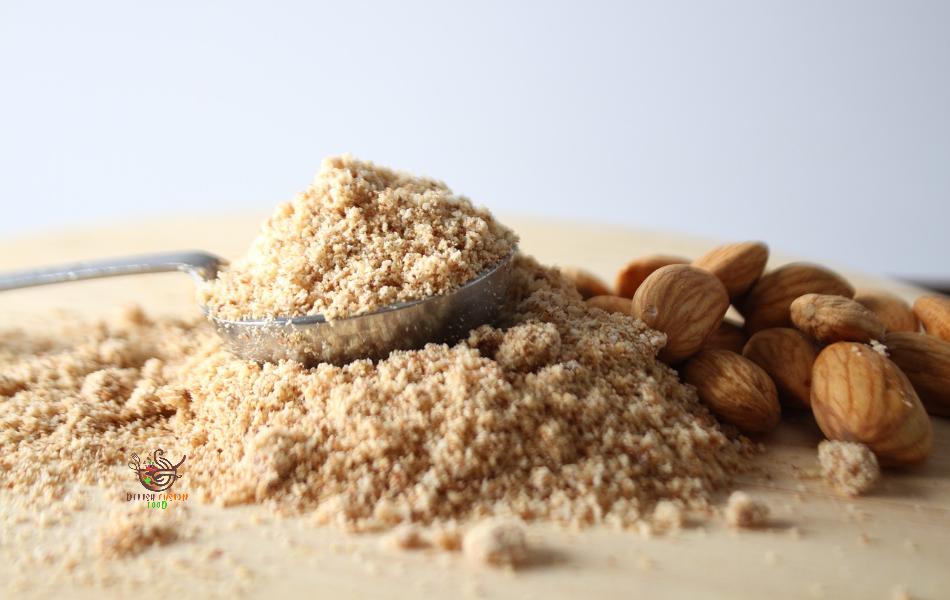
Almond flour is great for baking. It has a nutty taste and a grainy feel, unlike rice flour. It makes baked treats taste good, like cakes and breads. Since it absorbs the flavors of other ingredients, its nutty taste isn’t too strong.
Apart from baking, almond flour works as a thickener. But it might not taste or feel right in soups and sauces. Also, it burns fast, so don’t use it for frying. The good part about using almond flour instead of rice flour is that you can swap them equally in any recipe.
2. Coconut Flour
Coconut flour isn’t flavorless. It’s a good choice for gluten-free baking. It’s low in carbs, high in fiber, and fits well with Paleo diets because it’s grain-free.
Two properties of coconut flour are noteworthy. Firstly, it has a slightly sweet taste, making it suitable for gluten-free baking and recipes that call for sweeteners.
Another thing about coconut flour is that it soaks up more liquid than rice flour. So, I add an extra ¼ cup of liquid and one more egg than the recipe says. This stops the baked goods from becoming too dry.
When replacing rice flour with coconut flour, only use half the amount listed in the recipe. For example, if the recipe calls for 1 cup of rice flour, use only ½ cup of coconut flour. Ideal for baked goods as well as sweet sauces and fillings.
3. Quinoa Flour
Quinoa flour is packed with protein and fiber, making it incredibly nutritious. It also boasts a gentle nutty flavor that complements sweet baked goods. When replacing rice flour with quinoa flour, use ⅔ cup of quinoa flour for every 1 cup of rice flour in your recipe. Additionally, quinoa harmonizes excellently with fruits like apples or pears, ideal for muffins or scones.
4. Chickpea Flour
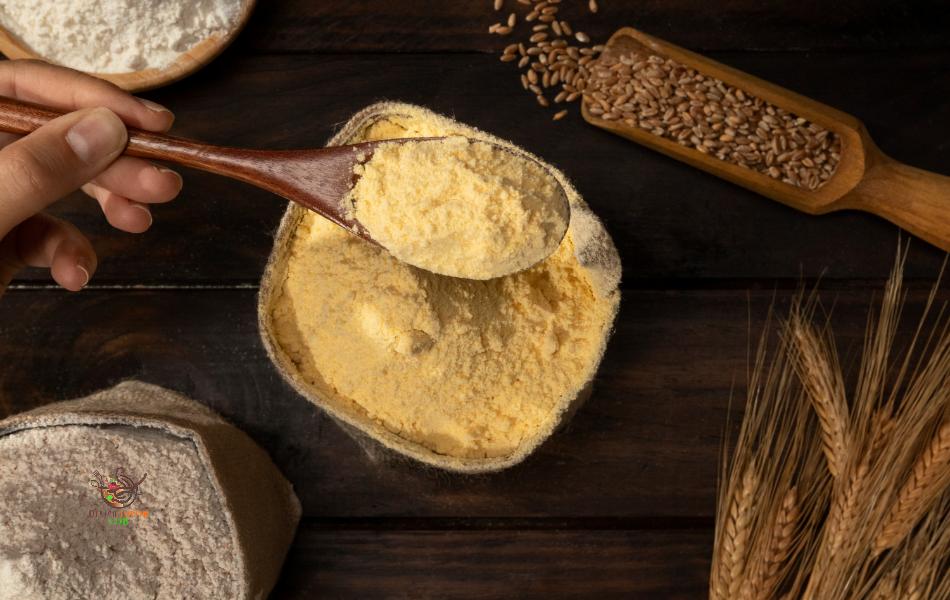
Chickpea flour, derived from ground chickpeas, offers an earthy flavor perfect for savory dishes like flatbreads and bhajiyas. To replace rice flour with chickpea flour, use ¾ cup plus one tablespoon of garbanzo bean flour for every cup of rice flour in your recipe. Additionally, it serves as a fantastic vegan alternative to egg whites when making pancakes or waffles!
5. Potato Starch
Potato starch is an excellent gluten-free substitute for rice flour. It creates baked goods that are light and fluffy, maintaining both taste and texture.
Potato starch blends nicely with herbs such as rosemary and vegetables like spinach or mushrooms in savory dishes like focaccia bread or scones.
6. Tapioca Starch
Tapioca, a starchy by-product of the cassava root, has many kitchen uses. While tapioca flour isn’t ideal for frying, it’s excellent for thickening and baking.
Tapioca flour is like rice flour in how it feels. Although slightly sweeter, its overall taste remains mild. So, you can use it in most recipes without changing the flavor too much.
The only problem with tapioca flour is that you need to use twice as much. But it’s one of the cheapest gluten-free flours, so it balances out.
7. Sorghum Flour
Sorghum flour is a perfect replacement for rice flour because it has a similar texture and taste. It’s excellent for baking cakes and cookies that need some structure.
When swapping sorghum flour for rice flour, use 1 cup of sorghum for every 1 cup of rice flour. Remember to adjust your recipe by either reducing other liquids or adding ¼ cup more dry ingredients for each cup of sorghum used.
8. Buckwheat Flour
With its nutty and earthy flavor resembling rice flour, buckwheat flour is both gluten-free and boasts a protein ratio similar to wheat flour. This unique combination results in a delightful texture for baked goods, offering a less dense quality. Whether in morning muffins, pancakes, or waffles, buckwheat flour serves as a flavorful substitute for baked goods, with a suggested 1:1 substitution for rice flour.
9. Millet Flour
Millet, an ancient grain, has a mild flavor and slightly gritty texture, making it ideal for baking. It’s rich in fiber, protein, iron, zinc, magnesium, and potassium, making it a top choice compared to other flours. Substitute millet flour in a 1:1 ratio for rice flour in any recipe.
Enhance your recipe by adding fruits like apples or pears, which complement millet beautifully!
10. Pea Protein Powder
Pea protein powder, derived from ground yellow split peas, is rich in dietary fiber and essential amino acids, perfect for gluten-free baking. For substituting rice flour with pea protein powder, use 1 ½ tablespoons for every tablespoon of rice starch to prevent overly dense baked goods. Pea protein complements dark chocolate well, so consider adding some to your next batch of brownies!
11. Cornstarch
Cornstarch, a common gluten-free thickener, is a great rice flour substitute for frying. It’s flavorless and doesn’t alter the taste of dishes. To thicken soups or sauces, mix cornstarch with water to make a slurry and add slowly. Adjust the amount as needed for the desired thickness.
12. Arrowroot Powder
Arrowroot powder is a popular alternative to corn-based thickeners. It works like cornstarch and can replace rice flour in recipes. Use it to thicken soups, sauces, and stews, or to coat meats and veggies before frying. You can also use arrowroot for baking when mixed with gluten-free flour, but the amounts may vary.
You might need to experiment to get the texture you like. Starting with ¼ cup of arrowroot powder mixed with ¾ cup of gluten-free flour for a total of 1 cup is a good starting point. If you’re short on rice flour, you can replace the rest with arrowroot powder. For instance, use ¾ cup of rice flour and ¼ cup of arrowroot powder to substitute 1 cup of rice flour.
13. All-Purpose Flour
All-purpose flour is a versatile substitute for rice flour in various applications. For thickening soups and sauces, frying, or baking, use it in a 1:1 ratio. If using it as a thickening agent, create a slurry similar to cornstarch. When employed for frying, it delivers a delightful crunchy texture, and in baking, it produces lighter and less dense baked goods compared to rice flour.
14. Oat Flour
Oat flour is a great replacement for rice flour, offering similar calories and nutrition. It gives baked goods a hearty texture while remaining light and fluffy if used properly. Plus, oats add healthy fiber, making it ideal for health-conscious bakers. Just note that oat flour can be gritty, so sifting may be necessary before adding it to your recipe.
15. Homemade Rice Flour
Making rice flour at home is simple! Just rinse and dry 2 ¼ cups of white basmati rice, then grind it into a fine powder using a blender or spice grinder. You can also use other types of long-grain white or brown rice, but white basmati rice yields the best texture. Avoid overworking your blender by grinding in small batches. To maintain the flour’s freshness for an extended period, store it in an airtight container.
Reasons to Substitute Rice Flour
Dietary Restrictions
Some individuals with dietary restrictions, like gluten intolerance or celiac disease, must avoid rice flour if it’s processed in facilities handling wheat products. Additionally, rice allergies may necessitate avoiding rice flour altogether.
Gluten-Free Options
Rice flour is a popular choice for those seeking gluten-free alternatives, but several other flours can serve as substitutes. Almond flour, coconut flour, and chickpea flour are all viable options for replacing rice flour in various recipes while maintaining a gluten-free approach.
Healthy Fat Sources
While rice flour is a low-fat choice, individuals seeking to increase their healthy fat intake can explore alternatives like almond flour and coconut flour, which offer nutritious fats.
Glycemic Index Concerns
Rice flour can quickly raise blood sugar due to its high glycemic index. For better blood sugar management, consider using almond or coconut flour.
See Also – Substitutes for Gram Flour: Try These 16 Alternatives
Don’t worry if you don’t have rice flour. There are lots of other flours you can use instead, like almond flour or coconut flour. They’re easy to find and work well in baking. So, go ahead and try them out in your recipes!

